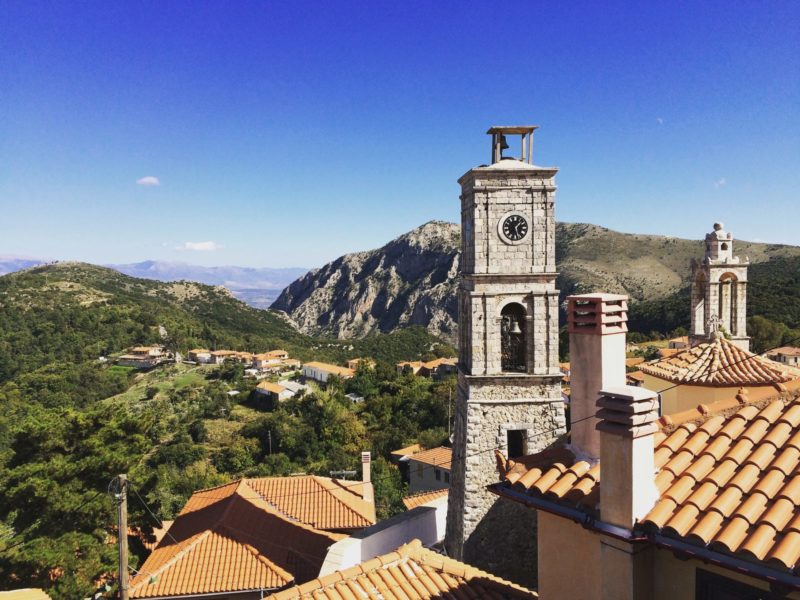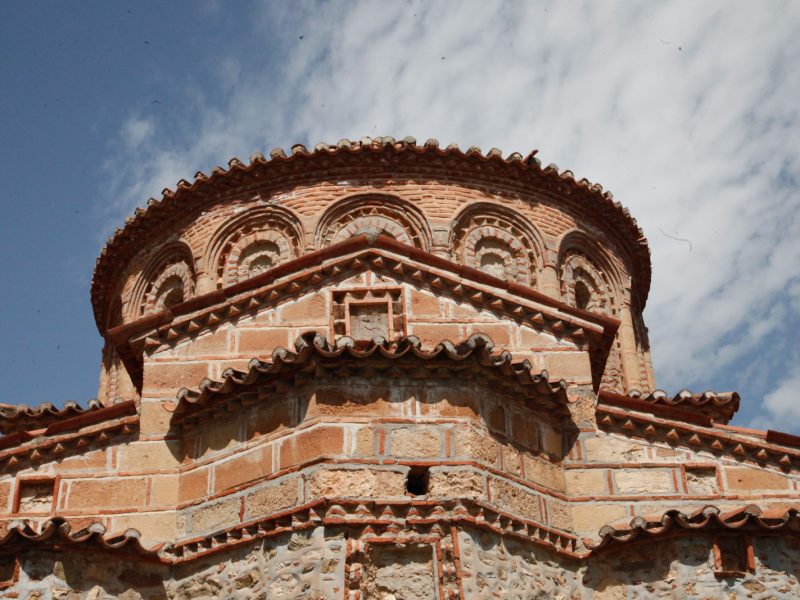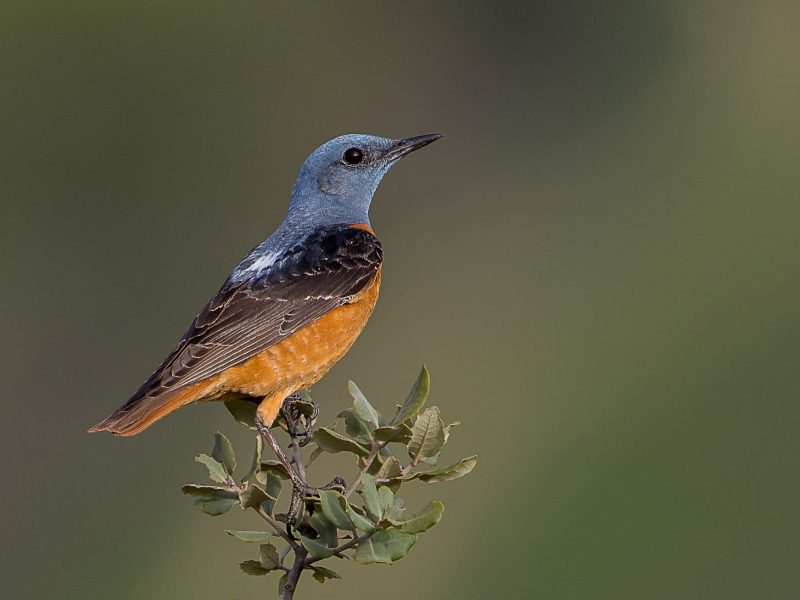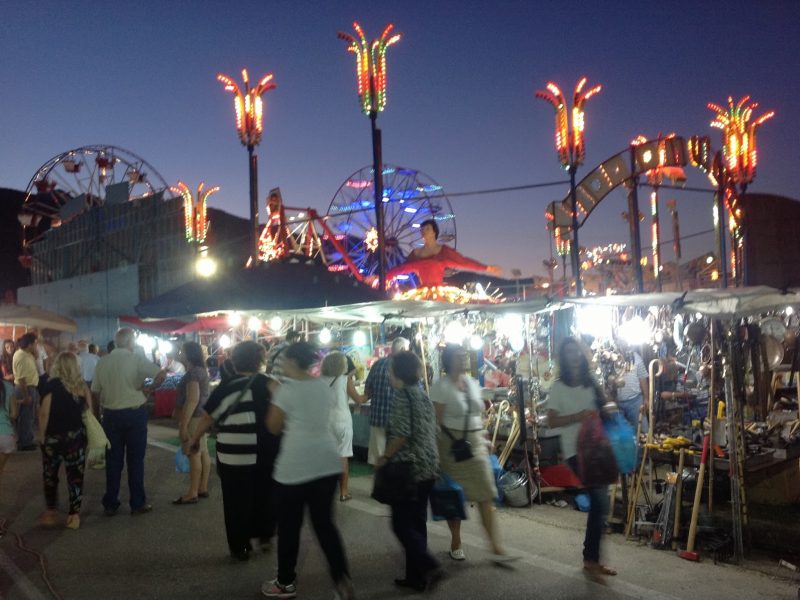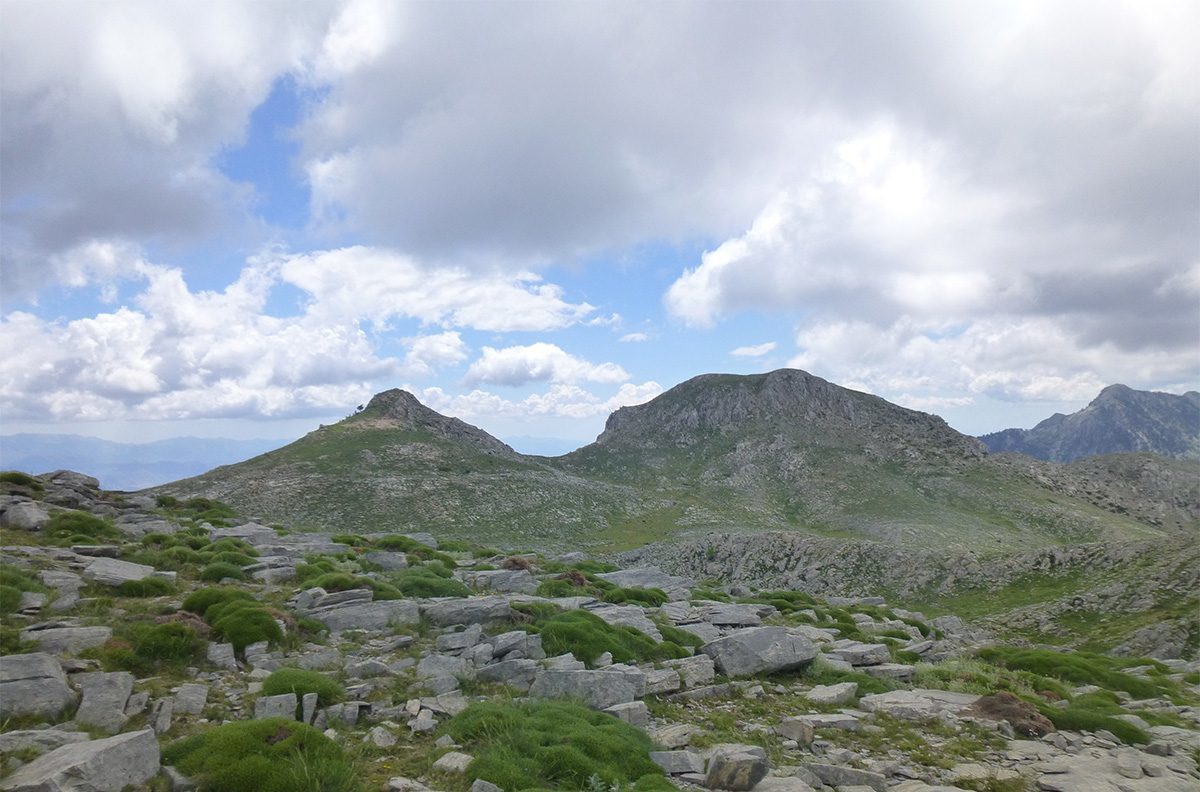


West of the settlement of Magoula, the seat of the Municipality of Mystras and at a distance of 6 km, Loggastra is built amphitheatrically on the slope of the dark mass of Taygetos. It has an altitude of 780 meters and 373 inhabitants but its natural position is such that it attracts many visitors, especially during the summer months, when it is an ideal refuge from the heat.
Loggastra, according to one opinion, was named after the Latin expression logum castrum, meaning a distant fortress/castle, compared to the castle of Mystras and Ano Vordonia as an intermediate, important fortified position. According to another version, it was named after the Greek word “loggos”, which means the wooded place. As the place where the settlement was built is lush with all kinds of trees, the second opinion seems more likely.
It is one of the municipal districts that despite its few inhabitants is very lively and promising for future development. It is pleasant that it maintains its traditional character, with simultaneous efforts to improve and adapt to the new data.
Visitors can find interesting the churches of Taxiarches (also the patron saint of Pano Chora) with the unique view towards the plain of Eurotas River, Agios Dimitrios in the center of the settlement and the small chapels dedicated to Panagia and Agios Nikolaos, points of religion and gathering, as in most of them on the day of their celebration brilliant festivals take place, that attract thousands of pilgrims from the surrounding areas.
In Agios Nikolaos and Alonostasi, nature lovers and hiking enthusiasts can find the tranquility and peace of the mountain combined excellently with the coolness that the green gorge will offer them.
Finally, the old stone bridges, scattered in every corner, true works of art, are convincing signs of reference to the past era. Then, when the lack of means was replaced by experience and enthusiasm. It is enough to stand for five minutes in front of Kopanou bridge, to walk its cobbled “swing”, to realize the fear, the maneuver, the effort and the mood of man, in front of nature. Tools that allowed him to extend it and, why not, to complement it.
In Loggastra all visitors can find unlimited hospitality and entertainment and taste unique traditional ‘meze’ but also local seasonal fruits: cherries, figs, grapes that will impress them and literally captivate them.
Source: mystras.gr (2008)
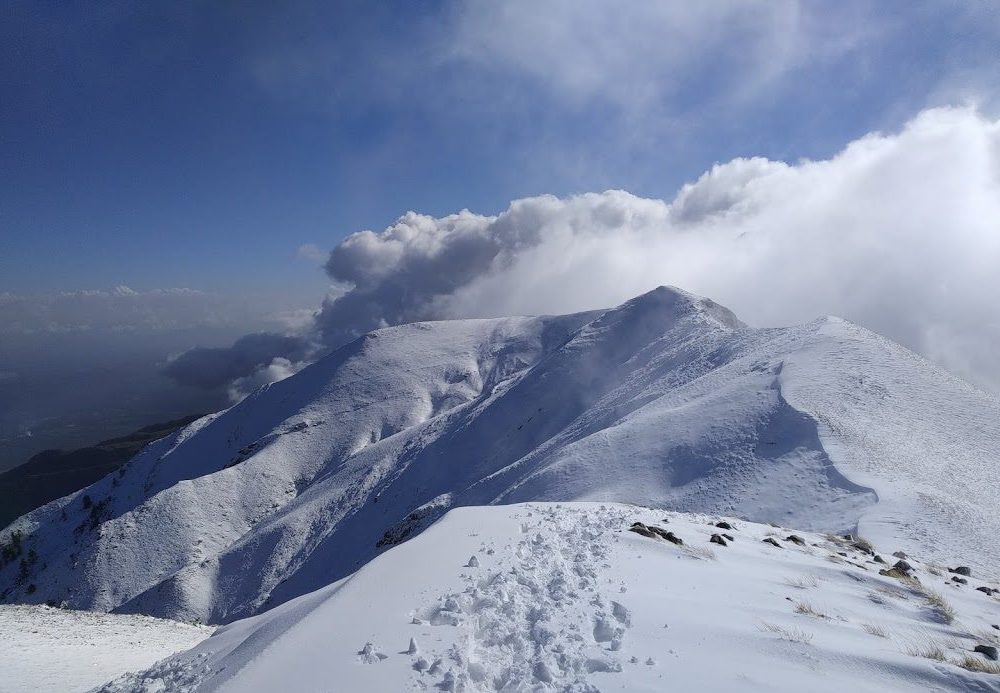
Car
From Athens: 218 km, 2.5 hours
From Kalamata: 98 km, 1 hour
The route follows the A6 (Attiki Odos), A8 (Elefsina-Corinth) and A7 (Corinth-Tripoli) highways, and then the A71 (Lefktro-Sparti) highway.
Bus
From Athens: 226 km, 3.5 hours
From Kalamata: 102 km, 1 hour
KTEL Lakonia operates several daily routes to and from Athens. These routes also serve the Sparta-Tripoli and Sparta-Corinth lines.
From the airport
From Eleftherios Venizelos – Athens Airport: 248 km, 2.5 hours
From Kalamata airport: 96 km, 1 hour
The road transition from Kalamata to Sparta takes about an hour. The route follows the A7 highway (Kalamata-Tripoli) and then the A71 highway (Lefktro-Sparti).
For road access to the paths of the present study, the following road network can be used:
The Sparti – Logastra provincial road
The Spartis – Kalamata highway
The national road Spartis – Mystras
The Spartis – Gytheio national road
The Spartis-Mystra provincial road
Amykles-Kalyvia Sochas street
Kalyvia Sochas – Sochas street
Mystra-Pikoulianika street
Mystras-Taygeti street
Taygeti – Pergandaika street
The Mystras-Vlahochori street
Agios Ioannis-Anavrytis street
In addition to the above paved roads, there are a number of existing forest and rural roads, mainly dirt, which allow access to the existing paths.
Η περιοχή προσφέρει μεγάλη ποικιλία χώρων διαμονής για όλα τα γούστα. Μπορείτε να βρείτε πέτρινα παραδοσιακά σπίτια και ξενώνες, μικρά ξενοδοχεία, resorts πολυτελείας και ενοικιαζόμενα δωμάτια, στο Μυστρά, Παρόρι, στα Πικουλιάνικα, στην Τρύπη, στην Αναβρύτη και στην Ταϋγέτη.
Για περισσότερες πληροφορίες: https://www.exploresparta.gr/tourism/diamoni/
From the main local products of the Spartan land the following stand out: olives of the “Kalamon” variety & virgin olive oil, oranges, honey, wine with the typical Kydonitsa, Mavroudi, Roditis, Athiri and Agiorgitiko varieties, synglino, sausage, pasta, trout and salmon.
Some of the most typical traditional dishes that you can look for on your trip are: Bouzopoula, Kokoras bardouniotikos, Pitaroudes, Kayanas, Kolokythokorphades.
More info at exploresparta.gr
Hiking boots, hat, sunscreen, long pants, water at least 1.5 liters, food, compass, whistle, flashlight, knife or multi-tool, watch and baton. In winter, windproof jacket, waterproof and isothermal clothes.
We also suggest that you never walk alone and always have a first aid kit with you. A well-charged mobile phone will come in handy in difficult situations.
You can hike all year round, except in the winter months when snow may close some paths. Spring and autumn are considered the best seasons thanks to mild temperatures and colourful nature. Due to the altitude, the air can be strong and icy. In summer (July, August) it may be hot enough to walk.
It is important toBefore every hike we are informed about the weather conditions.
We do not stray from the boundaries of the path.
We use fireplaces and avoid fires.
We don’t leave trash. On the path we collect rubbish that may have been left by others.
We do not destroy the vegetation, we respect the historical monuments and the local populations.
We respect wild animals and do not feed them.
Source: trailpath.gr
In the past, there were large mammals that today have disappeared such as bears, deer, roe deer, wolves and even the lynx. Today, 19 mammals have been observed in the mountain fauna, including the fox, badger, ferret, hare and hedgehog. Wildcat and jackal have also been reported although the population status of these species is not well documented. The only large mammal that is often seen is the wild boar.
In the event of the appearance of snakes, as a preventive measure, the hiker can be careful where he steps and where he puts his hands. If you encounter a snake, stay calm and keep a distance of at least two to three meters without disturbing it. In the event that you are bitten by a snake, stay calm, call 166 or 112 and take no action at all, except go to the health center with the help of an attendant. We recommend that you never walk alone.

